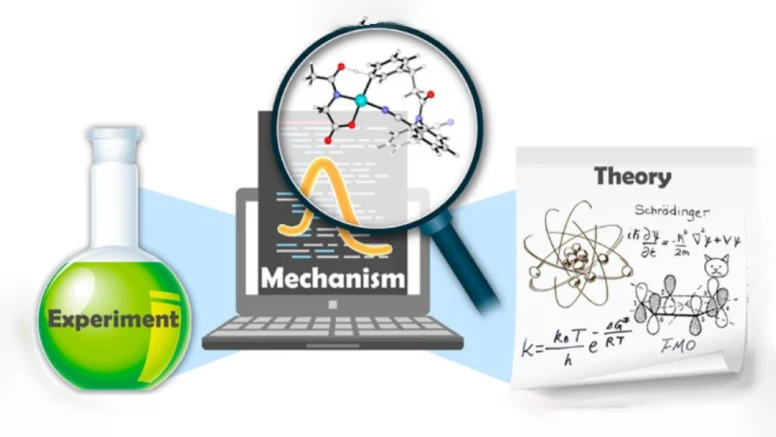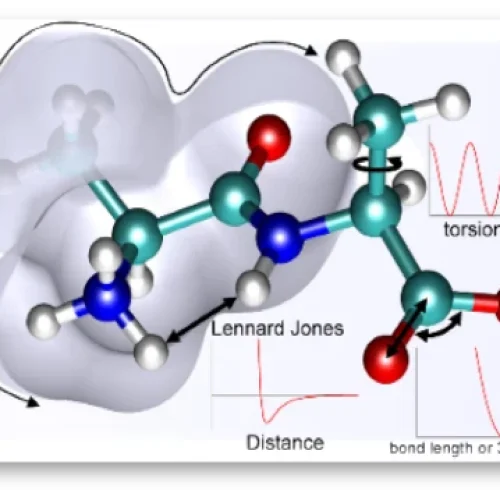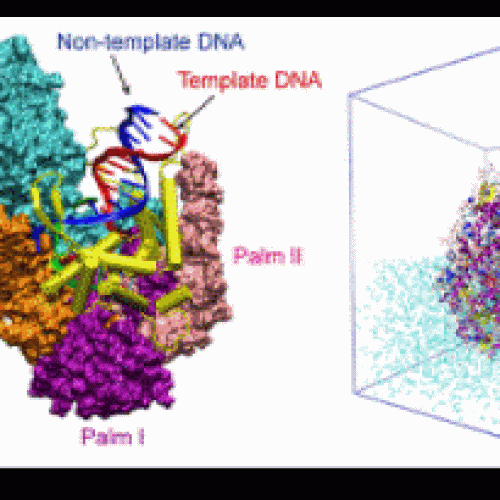What is computational chemistry?
- News
- -
- What is computational chemistry?

Computational chemistry, by definition, is the use of computer software to solve chemical problems. By doing so, scientists can simulate experimental results or do the simulation in advance and find properties of substances, molecules, or reactions.
The field of computational chemistry helps to explore properties that would be otherwise hard to understand or costly to find.
The calculations are based on the resolution of the Schrödinger equation by applying several approaches and approximations. Depending on the size of the molecules or the properties needed we can go from Ab initio calculations to Semi-empirical then molecular mechanics and molecular dynamics.
These techniques allow chemists to examine structures that would be nearly impossible to look at otherwise, due to their extremely small size. Nanoparticles, which are smaller than atoms, can be modeled for use in applications such as paper, electronics, medicine, and pharmacy, etc…
Process of the calculations
As a first step we investigate the electronic structure theory. This helps to get knowledge on the motion of the electrons within a molecule. At this point approximation was made to solve the Schrödinger equation to get properties, such as the wave function, applied on some software codes to create models of the studied molecules. The orbitals of the molecules will be easily studied, the energy of the system is then calculated and with that we can predict experimental path.
Depending on the size of the system we can choose which method and approximation is needed.
For small systems we use ab initio calculations which needs the minimum of approximations. Physical properties such as the geometry of the molecules, dipole moment, and energy. Properties of a total reaction can be investigated like vibrational frequencies, reaction rate, free energy, and the energy of the reaction.
For larger systems like biological molecules, we use Molecular dynamics.
In this situation more and more approximations lead to the use of less quantum physics due to the complexity of the system. Here force fields are applied to make the system looks like the real biological one. In here, computational chemist needs to take care of every single detail in the model to make it copy of the original molecule.
More methods exist for different kinds of systems like crystals or clusters and so on.
How computational chemistry will help to achieve the goals of MFP?
By using Computational Chemistry, we can study the paper making process from a different angle. We can look at the enzymatic treatment, the adsorption of molecules on cellulose fibers, and understand the inter and intramolecular interactions. Moreover, we could supervise the change of solvents, chemical entities, additives, and sizing agents only by doing simulations.
As a second step, it would be the discussion: will this help us? Do we agree on the process? Then we will have two ways: either go back and re-do the calculations or we agree on the results, and we go further for the experimental work.
The good thing about computational chemistry is that it is never a one-way work! There are always two ways. We can stop and re-start without having a big amount of loss. It is a very powerful tool to support or supervise experiment research.
It is true that we will need some energy to do the calculations but at the same time we save tons of energy (all kinds), water, chemicals, and fibers from being thrown away.
References:
Computational chemistry – Simple English Wikipedia, the free encyclopedia
Discover more news
Do you have any questions?
Feel free to contact us if you would like to find out more about Modellfabrik Papier, our tasks and our projects.
Discover more news
Learn more about us
Do you have any questions?
Feel free to contact us if you would like to find out more about Modellfabrik Papier, our tasks and our projects.
Shaping the future
Leading the way for sustainable paper production
Contact
- info@modellfabrikpapier.de
-
Current interim location:
Forschungszentrum Jülich -
Postal address:
Modellfabrik Papier gGmbH
August-Klotz-Straße21 - 52349 Düren
Newsletter
We send out a newsletter twice a year to keep you up to date with the latest news about Modellfabrik Papier.
powered by JAM digital

